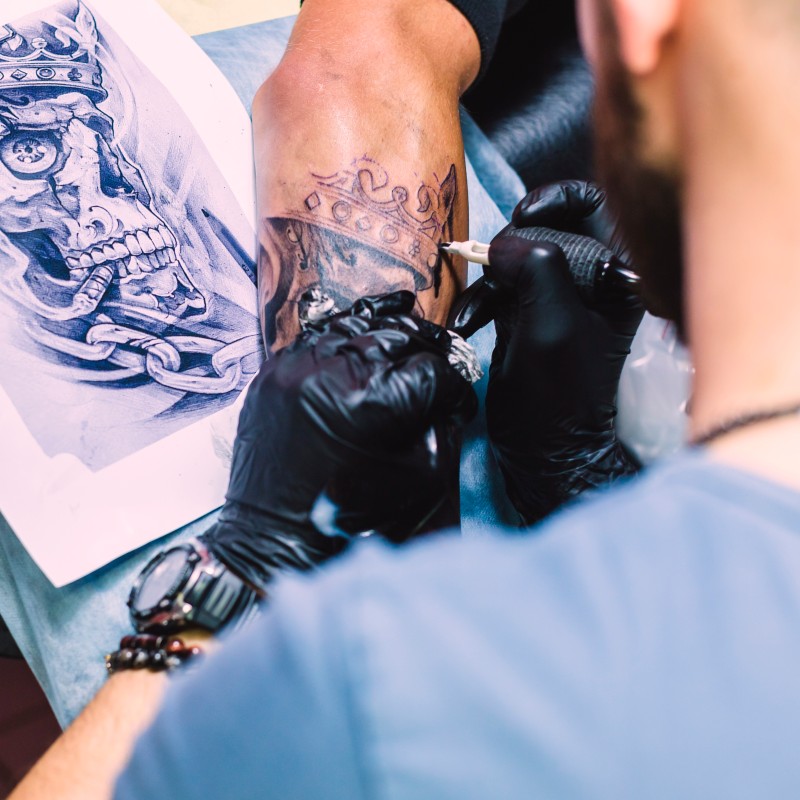From Idea to Ink: The Creative Process Behind Custom Tattoos

Actually, the procedure to transfer an image to the body of a human being is an artistic exercise beginning in the brain. Such an exercise is driven by elaborate ideas, creativity, and fine artistry. Every moment in such a process for a client as well as an artist is basically important to reach a distinct, unique creation to be manufactured on the skin that finds its value. Here is a closer look at the creative process behind custom tattoos and the role tattoo courses play in preparing artists to bring these designs to life.
Initial Consultation: Understanding the Client’s Vision
The custom tattoo process begins with a consultation. It is during this consultation that the tattoo artist meets the client to understand their vision and gather details that will influence the design. The artists will ask questions to understand the client’s motivations, aesthetic preferences, and specific design ideas. This phase is also where a good artist gauges elements like size, placement, color preferences, and potential symbolism.
This is both the client and the artist at a very crucial point. Depending on how well the tattoo artist can interpret and feel in his or her skin and soul the story of his or her client, that could be the difference between this tattoo being very personal and effective for them or not. The listening ability of tattoo artists who learn through comprehensive tattoo courses usually gives room for understanding clients’ wants and intentions, even if there is uncertainty about the specifics from the clients.
Research and Design Development
Now that the first consultation has come and gone, the tattoo artist goes into research and design. At this point, the idea is refined using visual references and inspiration. Again, depending on the style-intricate traditional, photo-realism, neo-traditional, or something entirely more abstract-the artist may pull inspiration from a variety of different sources, including historical artwork, nature, or cultural icons.
With a good idea of the goals the client is looking for, the artist starts brainstorming ideas by sketching them out. There could be several drafts that are revised according to the opinion of the client. In the case of tattoo artists, the development of designs is a skill that can be learned with time and practice, which usually starts with drawing and sketching techniques learned in tattoo courses. These courses usually focus on the skills to do line work, shading, and proportion, which are critical for the accurate and effective creation of tattoo ideas.
Client Feedback and Final Adjustments
The artist will usually provide the client with his rough draft so he can come back and give his opinion on where, in his judgment, things should be corrected. Rounds of details such as the thickness of lines and arrangements of colors can be changed, or sometimes other features of the tattoo are placed elsewhere as the client desires. This will guarantee the client’s satisfaction and, above all, emotional attachment toward the design.
This stage emphasizes the issue of teamwork in tattooing art. The course students for tattoos are usually taught to honor patience and flexibility. The two qualities allow an artist to compromise the tastes of the client without losing the artistic excellence he aims for. The flexible yet honest approach towards clients sustains effective communication toward a final design that thrills both parties.
Tattoo Application Preparation
Now it’s time for the tattoo artist to take the designed picture and apply it to the client’s skin in a stencil format to correctly locate the placement and orientation exactly as discussed. The skin within the tattoo area is sanitized properly with an antiseptic. Care is taken in order to ensure the proper alignment of the stencil into position for the correct positioning that would be desired.
Needles, inks, and equipment are selected according to the style of the tattoo. Smaller needle groupings would be required for fine details, while broader needles may be needed to achieve broader color fills. It is the stage where technical skills acquired in tattoo courses really shine, as artists must understand how different tools and techniques influence the end result. Many reputable courses also cover sanitation and equipment handling, teaching artists how to create safe and professional setups.
Tattoo Application: From Linework to Shading and Coloring
With everything set up, the tattooing can begin. For most tattoos, this starts with outlining, followed by shading and color filling if applicable. Each stage requires a steady hand and sharp eye because linework requires precision and shading has to be done to give the appearance of depth and texture.
A trained tattoo artist in Chandigarh knows how to lay colors and blend them in to create gradients that can actually give the tattoo a real or vibrant look. It is a mixture of technical know-how and an intuitive sense of art, which most tattoo artists develop with the constant practice and training done. Here, courses in tattoos help in building techniques such as black-and-grey shading, color blending, and line control-all these that ensure good-quality work.
Final Touches and Post-Care Instructions
The artist adds finishing touches, usually in the shape of highlights, to bring the image into life. The final touches are slight yet powerful because they give the tattoo depth and sheen. The tattoo is cleaned, and a layer of protection is put on the skin after completion.
Before the customer leaves, the artist goes through comprehensive aftercare instructions concerning the healing process of the tattoos and maintaining their vibrancy. These include hygiene, moisturizing, and protection from sun rays, as they are crucial aspects for long-term results. Teaching people about aftercare often usually forms a big part of the tattoo course, hence empowering artists to instruct the clients on how to treat their new tattoos appropriately.
The Lasting Work of Art: The Final Reveal
Once healed, it will be permanent art in the form of the part of the human body indicating both the narration of the client and also the artist engaged in the production of work of art.
Each line, shade, and color contribute to providing a personalized, engraving on one’s skin, not only in terms of personification but also in an artistic way. For most tattoo artists, custom designs would give them that satisfactory feeling based on the underlying meaning that it conveys for the stories of their clients.
Final thoughts
Making tattoos is collaborative work requiring multi-steps of being technical as well as possessing creativity and sensitivity. Such an artist will be perfect by combining the insights of clients with his artistic vision; it becomes meaningful and visually challenging to draw a piece. A basic tattoo course in Chandigarh introduces one to drawing, the science of sanitation, equipment manipulation, and communication with one’s clients-all important processes involved in this creative line. It will be in the end the custom tattoos that speak about artistry, professionalism, and dedication demanded by tattooing, celebrating individuality with the ink of each client.







